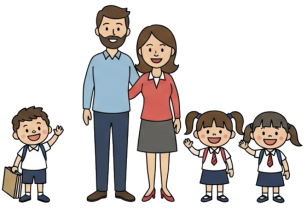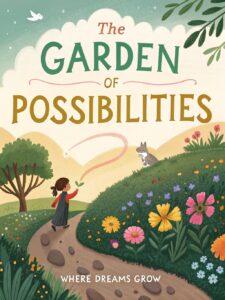
Question More, Action Knowledge.
Remember, at QMAK, we don’t just teach; we empower. We don’t just inform; we inspire. We don’t just question; we act. Become a Gold Member, and let’s unlock your child’s full potential, one question at a time.

Once upon a time, in a small village surrounded by rolling hills, there lived a curious child named Sam. Sam loved exploring and asking questions about everything.
“Why do some flowers grow tall while others stay small?” Sam asked Grandma one sunny morning.
Grandma smiled. “Everything grows differently based on where it’s placed,” she said. “Just like you grow in your own special way based on what surrounds you.”
Sam thought about this while helping Grandma in her garden. Some plants thrived in the sunny spots, while others preferred the shade.
“I wonder what helps me grow best,” Sam whispered to a butterfly that landed nearby.
That night, Sam had a wonderful dream. In the dream, a wise old tree spoke with a gentle voice.
“Sam,” the tree said, “you are like a seed with amazing potential. Every day, you can choose environments that help you grow strong and happy.”
The next morning, Sam woke up feeling excited. “I’m going to pay attention to how different places make me feel!”
Sam started noticing interesting things. The quiet library helped with focusing. The playground made creativity bubble up like a fountain. Home felt warm and safe for trying new things.
“Grandma,” Sam said that evening, “I think I’m learning about environments! Some places help me feel brave, some help me think clearly, and some help me feel peaceful.”
Grandma nodded. “That’s wonderful, Sam. The more you notice what helps you grow, the more you can create spaces that support what you want to become.”
Sam smiled. “And I can also be a good environment for others, right? Like how your garden is a happy place for plants and butterflies.”
“Exactly,” Grandma replied. “We all help shape each other’s worlds.”
From that day on, Sam became an environment explorer, discovering how to create the right conditions for all kinds of wonderful things to grow – including dreams, friendships, and new ideas.
And whenever something seemed difficult, Sam remembered the wise tree’s words: “You have everything you need to bloom where you’re planted, and the power to seek new gardens when it’s time to grow in new ways.”
The positive messages include:
The elementary reading level is maintained through simple sentence structures, concrete examples, and relatable experiences, while still introducing important concepts about environmental influence on development.

Remember, at QMAK, we don’t just teach; we empower. We don’t just inform; we inspire. We don’t just question; we act. Become a Gold Member, and let’s unlock your child’s full potential, one question at a time.